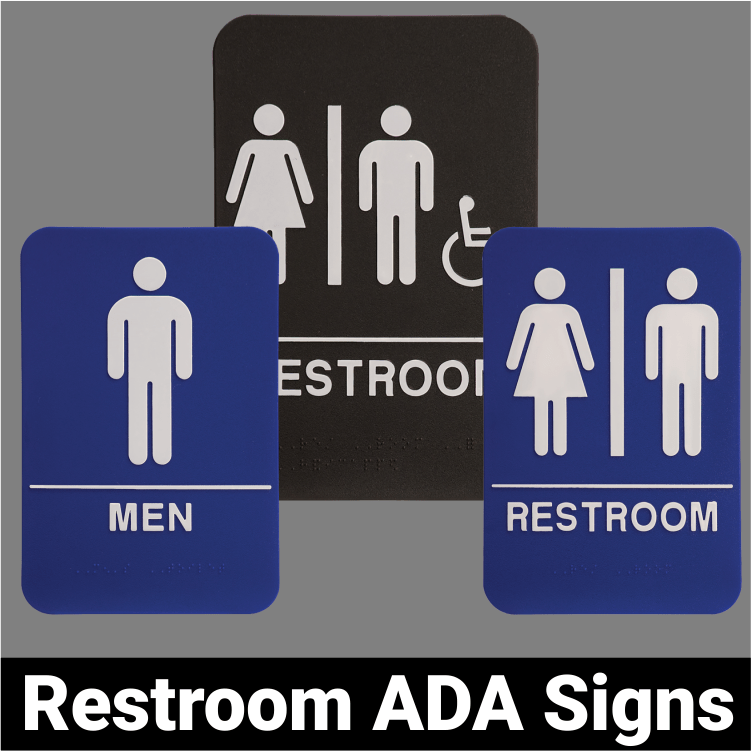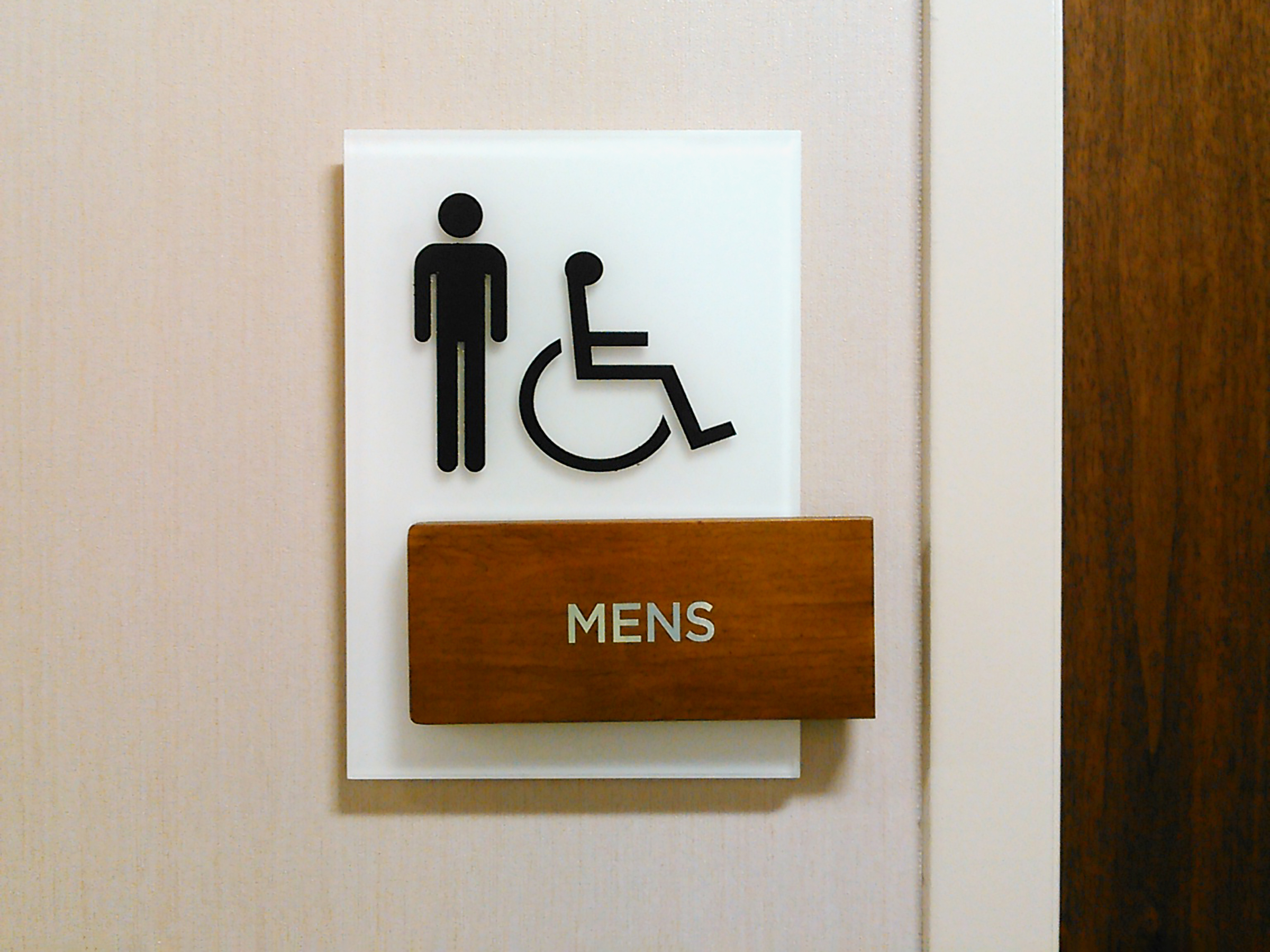Discover the Significance of ADA Signs in Public Spaces
Discover the Significance of ADA Signs in Public Spaces
Blog Article
Discovering the Trick Attributes of ADA Indicators for Boosted Access
In the world of access, ADA indicators offer as quiet yet powerful allies, guaranteeing that spaces are inclusive and accessible for people with specials needs. By integrating Braille and tactile elements, these indicators damage barriers for the visually damaged, while high-contrast color pattern and readable fonts deal with varied visual needs. In addition, their critical positioning is not arbitrary yet instead a computed initiative to promote smooth navigation. Yet, past these functions exists a much deeper narrative concerning the advancement of inclusivity and the recurring dedication to producing fair areas. What much more could these indicators symbolize in our quest of global access?
Significance of ADA Conformity
Making certain compliance with the Americans with Disabilities Act (ADA) is vital for promoting inclusivity and equivalent access in public areas and offices. The ADA, established in 1990, mandates that all public facilities, employers, and transport services fit people with disabilities, ensuring they appreciate the very same legal rights and possibilities as others. Conformity with ADA requirements not only satisfies legal commitments yet also enhances an organization's track record by showing its dedication to variety and inclusivity.
One of the crucial elements of ADA compliance is the implementation of obtainable signs. ADA indications are created to guarantee that individuals with handicaps can quickly browse with rooms and buildings.
Furthermore, adhering to ADA laws can alleviate the risk of potential penalties and legal effects. Organizations that stop working to conform with ADA standards may face suits or penalties, which can be both harmful and monetarily troublesome to their public photo. Hence, ADA conformity is essential to cultivating an equitable setting for everyone.
Braille and Tactile Elements
The unification of Braille and tactile aspects right into ADA signage personifies the principles of accessibility and inclusivity. These functions are crucial for individuals who are blind or aesthetically impaired, allowing them to browse public rooms with greater self-reliance and self-confidence. Braille, a responsive writing system, is vital in giving composed info in a layout that can be easily perceived via touch. It is usually positioned beneath the corresponding text on signs to guarantee that people can access the details without aesthetic assistance.
Tactile components expand beyond Braille and consist of increased symbols and personalities. These parts are made to be noticeable by touch, enabling individuals to determine space numbers, bathrooms, departures, and other crucial areas. The ADA sets particular guidelines concerning the dimension, spacing, and placement of these tactile components to maximize readability and make certain uniformity across different atmospheres.

High-Contrast Color Design
High-contrast color design play an essential role in enhancing the presence and readability of ADA signage for browse around these guys people with visual impairments. These systems are crucial as they make the most of the distinction in light reflectance between message and background, making certain that indications are conveniently discernible, also from a distance. The Americans with Disabilities Act (ADA) mandates using details shade contrasts to accommodate those with minimal vision, making it an important facet of conformity.
The effectiveness of high-contrast shades hinges on their capability to stand out in different lighting problems, consisting of dimly lit atmospheres and locations with glare. Typically, dark text on a light background or light text on a dark history is employed to accomplish optimal comparison. Black message on a white or yellow background supplies a raw visual distinction that assists in fast acknowledgment and comprehension.

Legible Fonts and Text Dimension
When considering the design of ADA signage, the option of clear fonts and appropriate message size can not be overstated. The Americans with Disabilities Act (ADA) mandates that font styles need to be not italic and sans-serif, oblique, manuscript, highly decorative, or of uncommon type.
According to ADA standards, the minimum message height should be 5/8 inch, and it needs to boost proportionally with viewing range. Consistency in message dimension contributes to a natural visual experience, helping individuals in navigating environments efficiently.
In addition, spacing between lines and letters is essential to readability. Ample spacing protects against personalities from appearing crowded, improving readability. By adhering to these standards, developers can substantially improve access, guaranteeing that signs offers its designated purpose for all individuals, no matter their visual abilities.
Reliable Placement Approaches
Strategic positioning of ADA signs is vital for making the most of availability and making sure compliance with legal criteria. ADA pop over to this site standards specify that indications need to be mounted at an elevation between 48 to 60 inches from the ground to ensure they are within the line of sight for both standing and seated people.
In addition, indications should be placed beside the latch side of doors to allow very easy identification before access. This positioning aids people locate spaces and areas without blockage. In instances where there is no door, indications must be positioned on the local surrounding wall surface. Uniformity in indication placement throughout a center enhances predictability, reducing complication and improving total user experience.
Final Thought
ADA indicators play a crucial duty in promoting access by integrating features that address the requirements of people with handicaps. Incorporating Braille and responsive elements makes sure crucial info comes to the visually impaired, while high-contrast color pattern and understandable sans-serif fonts improve exposure throughout numerous lighting conditions. Effective placement methods, such as proper placing heights and calculated locations, even more facilitate navigating. These components collectively foster a comprehensive setting, underscoring the importance of ADA compliance in ensuring equivalent accessibility for all.
In the realm of access, ADA indicators serve as silent yet effective allies, making sure that rooms are inclusive and accessible for people with disabilities. The ADA, enacted in 1990, mandates that all public centers, employers, and transportation solutions fit individuals with handicaps, Check This Out guaranteeing they take pleasure in the same civil liberties and possibilities as others. ADA Signs. ADA indications are made to make certain that individuals with disabilities can conveniently navigate via structures and rooms. ADA standards stipulate that indicators must be mounted at a height between 48 to 60 inches from the ground to ensure they are within the line of view for both standing and seated individuals.ADA signs play an essential duty in promoting access by incorporating functions that address the needs of people with impairments
Report this page